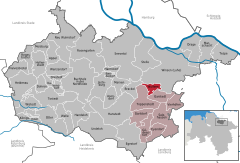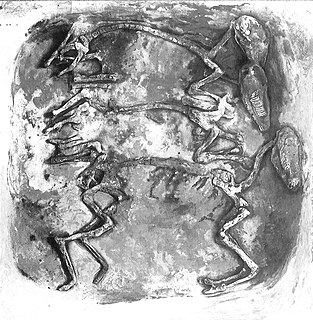Wulfsen | |
|---|---|
Location of Wulfsen within Harburg district  | |
| Coordinates: 53°18′N10°09′E / 53.300°N 10.150°E Coordinates: 53°18′N10°09′E / 53.300°N 10.150°E | |
| Country | Germany |
| State | Lower Saxony |
| District | Harburg |
| Municipal assoc. | Salzhausen |
| Government | |
| • Mayor | Gerd Müller (CDU) |
| Area | |
| • Total | 8.42 km2 (3.25 sq mi) |
| Elevation | 22 m (72 ft) |
| Population (2020-12-31) [1] | |
| • Total | 1,725 |
| • Density | 200/km2 (530/sq mi) |
| Time zone | UTC+01:00 (CET) |
| • Summer (DST) | UTC+02:00 (CEST) |
| Postal codes | 21445 |
| Dialling codes | 04173 |
| Vehicle registration | WL |
Wulfsen is a municipality in the district of Harburg, in Lower Saxony, Germany.





